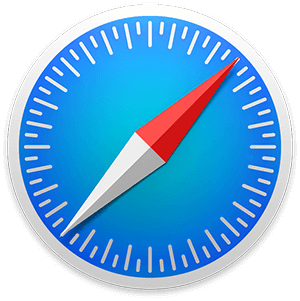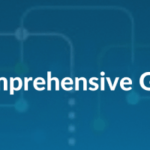
In the evolving world of analytics, organizations are constantly seeking ways to enhance their capabilities and stay ahead of the competition. In the context of Qlik analytics, transitioning from QlikView to Qlik Sense is one such imperative in the journey of modernization.
In this blog, we will explore why organizations should transition from QlikView to Qlik Sense and how analytics teams can proactively assess risks, set realistic goals and maximise gains in the process of migrating from QlikView to Qlik Sense.
Why migrate from QlikView to Qlik Sense?
1. Governed, Self-service Analytics
Qlik Sense offers an enterprise data catalog, providing users with a central and intuitive interface to access and search for data. This self-service approach empowers Qlik Sense users to explore and analyze data independently while ensuring governance and data security.
2. AI & Augmented Analytics
Qlik Sense leverages machine intelligence to automate a range of user tasks, offer contextual insights, and enable natural-language interactions. By incorporating artificial intelligence and augmented analytics, Qlik Sense enhances the analytical capabilities of users and enables them to uncover meaningful insights faster.
3. Rich Visualization
Qlik Sense provides a wide range of smart visualizations that highlight outliers, identify hotspots, and summarize the overall shape of data. Qlik Sense also suggests relevant chart types based on data characteristics, enabling users to create visually appealing and informative visualizations effortlessly.
4. Visual Data Prep
With Qlik Sense’s simple, attractive, and interactive user interface, users can easily manage data and create visualizations using drag-and-drop functionality. This visual data preparation feature of Qlik Sense empowers business users to perform data transformations and create meaningful visual representations without relying on IT teams.
5. Collaborative Data Storytelling
Qlik Sense enables users to combine reporting, presentation, and exploratory analysis to create compelling data stories. Qlik Sense encourages interactive data exploration and facilitates conversations around data, allowing users to communicate insights effectively and drive data-informed decision-making.
6. Open Platform with APIs
Qlik Sense provides open APIs that give developers the freedom to create customized extensions and embed analytics seamlessly into other applications. This open platform approach enables organizations to extend Qlik Sense capabilities and integrate it with their existing technology stack.
Let’s deep dive into finer aspects and compare QlikView to Qlik Sense.
| PRODUCT | QLIK SENSE | QLIKVIEW |
|---|---|---|
| CLIENT | ||
| Unified HTML 5 Client | X | X |
| Touch User Experience | X | |
| Responsive Design | X | |
| PLATFORM | ||
| Broad Data Connectivity | X | X |
| Data Integration – ETL | X | X |
| Big Data Capabilities – Indexing | X | |
| Broad Ecosystem and Community | X | X |
| DEPLOYMENT | ||
| Co-developing Content | X | |
| App Development – Open APIs | X | |
| Self-Service Data Preparation | X | |
| Advanced Authoring | X | |
| Desktop Development | X | |
| Offline Development | X | X |
| Server-side Development | X | X |
| ANALYTICS | ||
| Associative Exploration | X | X |
| Search-based Analysts | X | X |
| Modern Visualizations | X | |
| Guided Analytics Apps/ Dashboards | X | X |
| Advanced Analytics Integration | X | X |
| AUGMENTED INTELLIGENCE | ||
| Cognitive Engine | X | |
| Auto-generation (Charts and Insights) | X | |
| Conversational Analytics | X | |
| Machine Learning and Adaption | X | |
| COLLABORATION | ||
| Collaboration Hub | X | |
| Data Storytelling | X | |
| Data Storytelling | X | X |
| Managed Reporting | X | X |
| DEPLOYMENT | ||
| Centralized Management | X | X |
| Governed Libraries | X | |
| SaaS Deployment Options | X | |
| Associative Indexing Engine | X | X |
The case is clear in most cases on migration from QlikView to Qlik Sense. While doing so, it is important for teams to rely on an approach that will optimize for speed and performance. Let’s look at simple framework that aids this goal.
Migrating from QlikView to Qlik Sense: The Journey
Here are the key steps involved in assessing the readiness before initiating migration
Application Assessment
Conducting an assessment to evaluate the existing QlikView applications helps determine which applications can be decommissioned, which parts can be retained, and which need to be fully recreated in Qlik Sense. This includes Identifying the specific features and functionality required in Qlik Sense to meet business needs.
Tool and Script Assessment
Evaluating any additional tools and functionalities used in QlikView, such as NPrinting or Geo Analytics to explore their compatibility with Qlik Sense. Identifying any scripts, functions, or prefixes used in QlikView that are not supported in Qlik Sense to recreate.
Training and License Assessment
Assessing readiness of the business users to adapt to Qlik Sense, determining the training requirements and developing a comprehensive training program to familiarize users with the new features and functionalities. This phase includes the licensing and cost implications of transitioning from QlikView to Qlik Sense.
Migration from QlikView to Qlik Sense and Testing
On completion of these assessments, a check list of transition components including variables, access, scripts to be recreated becomes handy to initiate the migration process. The QlikView to Qlik Sense migration process as such can be carried out manually or with use of Qlik’s convertor with minimal interventions.
Once the conversion takes place, it is critical to test thoroughly, validate interfaces, extensions and data connectors before admins or project owners can train teams and make it available for others.
Navigating risks in QlikView to Qlik Sense Migration
All said and done, each migration brings its own set of risks and benefits. Here are a few common and practical challenges to consider solving for during the journey of migrating from QlikView to Qlik Sense:
Coping with the new experience:
QlikView and Qlik Sense offer different user experiences. Adequate training is crucial to ensure complete adoption of Qlik Sense by business users. Providing comprehensive training and support to familiarize users with the new platform enhances capabilities.
Merging Applications:
Merging multiple QlikView applications into a single Qlik Sense application can unearth new challenges and impact transition timelines. Planning and executing the consolidation process carefully helps reduce complexity of existing applications and data models.
Planning Development Milestones:
Identifying all QlikView applications and creating a clear migration plan early in the assessment phase is crucial. Having a well-defined roadmap and timeline helps avoid project overruns or glitches. Collaborating closely with stakeholders to ensure a smooth transition and minimizes any disruption to business operations during migration from QlikView to Qlik Sense.
Functionality woes:
QlikView may have certain features that are not available in Qlik Sense. It is crucial to educate end users about equivalent or better features available in Qlik Sense over QlikView so as to mitigate any concerns or resistance to the transition. Emphasizing the advantages and additional functionalities provided by Qlik Sense encourages user acceptance.
Licensing and cost considerations:
During the assessment phase, engage with stakeholders to discuss the licensing and maintenance model of Qlik Sense. It is important to ensure that all parties agree on the licensing structure and understand the business impact of the transition in terms of cost. This alignment helps avoid any surprises or disputes later in the process.
In conclusion, transitioning from QlikView to Qlik Sense presents organizations with an opportunity to modernize their analytics capabilities and unlock the full potential of their Qlik investments. The process can be seamless if organizations consider best practices from the empirical approach outlined in this article.
GainInsights, a data analytics firm specializing in areas of Business Intelligence Modernization, Data Platform Engineering and No-Code Solutions has helped data-driven companies accelerate migration from legacy to modern cloud platforms and drive success in digital transformation initiatives.
1-week ‘QlikView to Qlik Sense’ Migration Assessment
If you are evaluating migration from QlikView to Qlik Sense and are looking for a seamless transition and better returns on your new investments, explore a 1-week risk assessment and approach workshop with us. Contact us or reach out to info@gain-insights.com for more.















